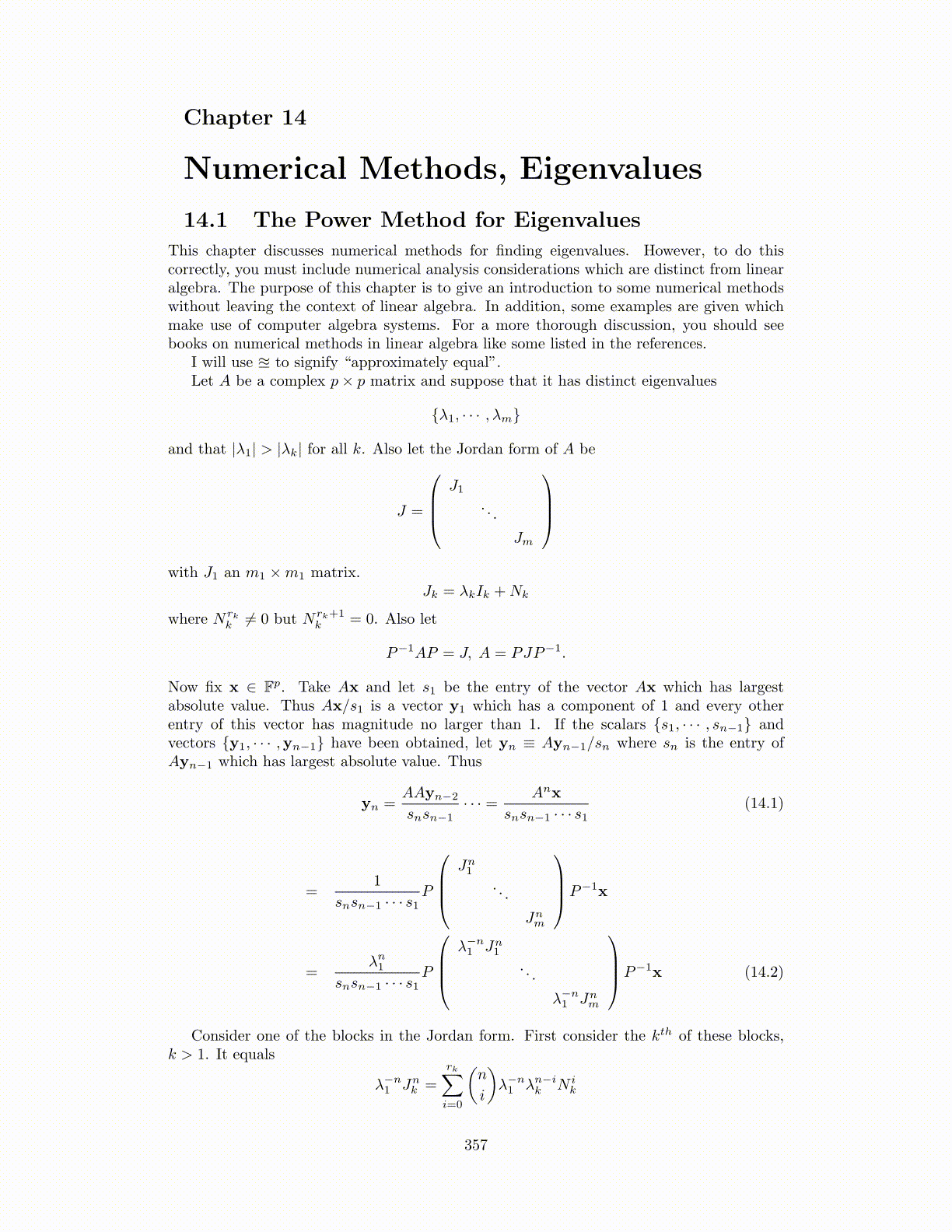
Chapter 14
Numerical Methods, Eigenvalues
14.1 The Power Method for Eigenvalues
This chapter discusses numerical methods for finding eigenvalues. However, to do thiscorrectly, you must include numerical analysis considerations which are distinct from linearalgebra. The purpose of this chapter is to give an introduction to some numerical methodswithout leaving the context of linear algebra. In addition, some examples are given whichmake use of computer algebra systems. For a more thorough discussion, you should seebooks on numerical methods in linear algebra like some listed in the references.
I will use ≊ to signify “approximately equal”.Let A be a complex p× p matrix and suppose that it has distinct eigenvalues
{λ1, · · · , λm}
and that |λ1| > |λk| for all k. Also let the Jordan form of A be
J =
J1
. . .
Jm
with J1 an m1 ×m1 matrix.
Jk = λkIk +Nk
where Nrkk ̸= 0 but Nrk+1
k = 0. Also let
P−1AP = J, A = PJP−1.
Now fix x ∈ Fp. Take Ax and let s1 be the entry of the vector Ax which has largestabsolute value. Thus Ax/s1 is a vector y1 which has a component of 1 and every otherentry of this vector has magnitude no larger than 1. If the scalars {s1, · · · , sn−1} andvectors {y1, · · · ,yn−1} have been obtained, let yn ≡ Ayn−1/sn where sn is the entry ofAyn−1 which has largest absolute value. Thus
yn =AAyn−2
snsn−1· · · = Anx
snsn−1 · · · s1(14.1)
=1
snsn−1 · · · s1P
Jn1
. . .
Jnm
P−1x
=λn1
snsn−1 · · · s1P
λ−n1 Jn
1
. . .
λ−n1 Jn
m
P−1x (14.2)
Consider one of the blocks in the Jordan form. First consider the kth of these blocks,k > 1. It equals
λ−n1 Jn
k =
rk∑i=0
(n
i
)λ−n1 λn−i
k N ik
357